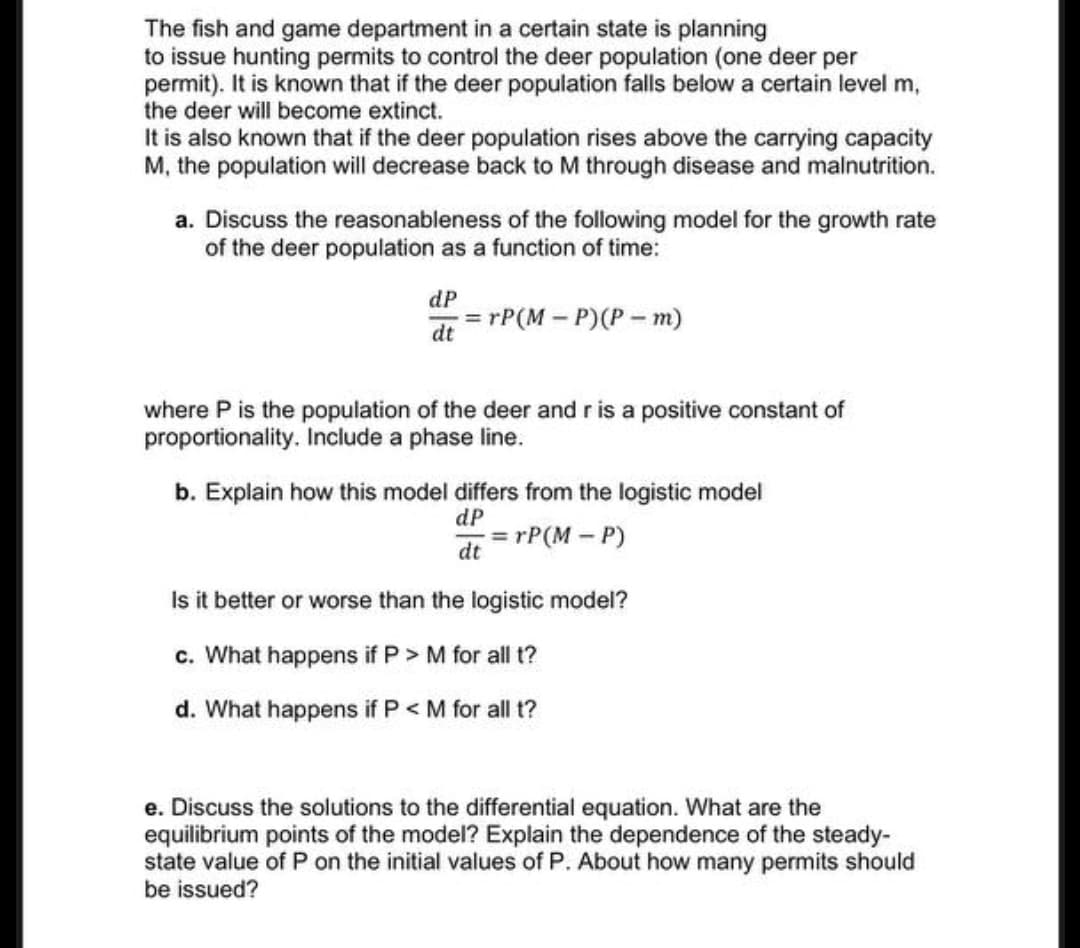e. Discuss the solutions to the differential equation. What are the equilibrium points of the model? Explain the dependence of the steady- state value of P on the initial values of P. About how many permits should be issued?
e. Discuss the solutions to the differential equation. What are the equilibrium points of the model? Explain the dependence of the steady- state value of P on the initial values of P. About how many permits should be issued?
Linear Algebra: A Modern Introduction
4th Edition
ISBN:9781285463247
Author:David Poole
Publisher:David Poole
Chapter7: Distance And Approximation
Section7.3: Least Squares Approximation
Problem 33EQ
Related questions
Question
please solve the last part, e. Discuss the solutions to the differential equation. What are the equilibrium points of the model? Explain the dependence of the steady state value of P on the initial values of P. About how many permits should be issued?

Transcribed Image Text:The fish and game department in a certain state is planning
to issue hunting permits to control the deer population (one deer per
permit). It is known that if the deer population falls below a certain level m,
the deer will become extinct.
It is also known that if the deer population rises above the carrying capacity
M, the population will decrease back to M through disease and malnutrition.
a. Discuss the reasonableness of the following model for the growth rate
of the deer population as a function of time:
dP
=
=rP(M-P)(Pm)
dt
where P is the population of the deer and r is a positive constant of
proportionality. Include a phase line.
b. Explain how this model differs from the logistic model
dP
=rP(M-P)
dt
Is it better or worse than the logistic model?
c. What happens if P > M for all t?
d. What happens if P < M for all t?
e. Discuss the solutions to the differential equation. What are the
equilibrium points of the model? Explain the dependence of the steady-
state value of P on the initial values of P. About how many permits should
be issued?
Expert Solution
This question has been solved!
Explore an expertly crafted, step-by-step solution for a thorough understanding of key concepts.
Step by step
Solved in 4 steps with 4 images

Recommended textbooks for you

Linear Algebra: A Modern Introduction
Algebra
ISBN:
9781285463247
Author:
David Poole
Publisher:
Cengage Learning


Algebra & Trigonometry with Analytic Geometry
Algebra
ISBN:
9781133382119
Author:
Swokowski
Publisher:
Cengage

Linear Algebra: A Modern Introduction
Algebra
ISBN:
9781285463247
Author:
David Poole
Publisher:
Cengage Learning


Algebra & Trigonometry with Analytic Geometry
Algebra
ISBN:
9781133382119
Author:
Swokowski
Publisher:
Cengage

Trigonometry (MindTap Course List)
Trigonometry
ISBN:
9781337278461
Author:
Ron Larson
Publisher:
Cengage Learning
